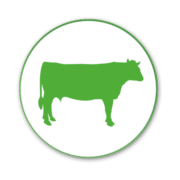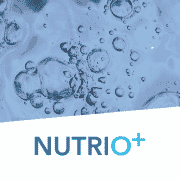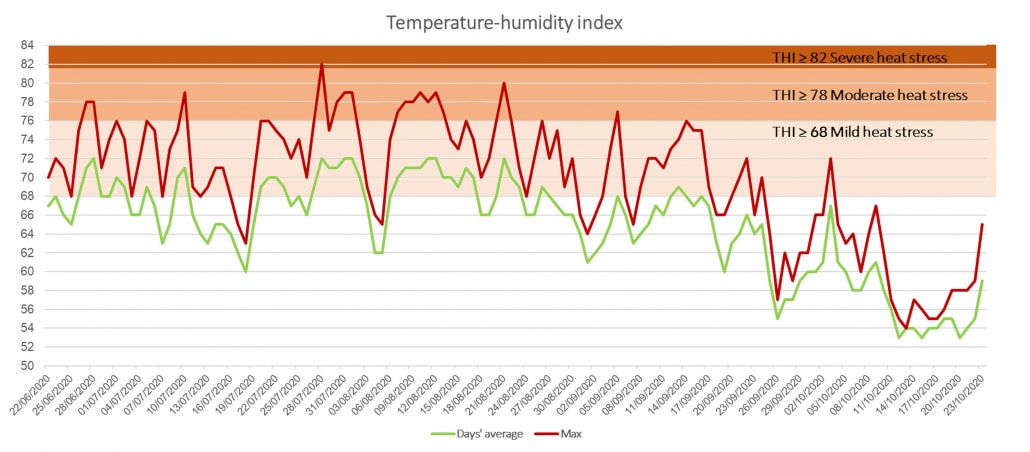Swine and the role of nutrition
Swine & The Role of Nutrition along the Animal Production Value Chain
Mondern animal nutrition is extremely technical and precise; the animal’s nutritional requirements are calculated to optimise performance while minimising cost and environmental impact.
by JOËLLE FAUGERON, Product Manager (Palatants), Pancosma, ADM Animal Nutrition, published in Livestock and Feed, November 2022
In swine husbandry, weaning is a crucial phase where the piglets face significant challenges. They have to switch from liquid to solid feed. Yet, their gut is not fully mature and ready for this change. This phase is also crucial for a good start for the animal as a good post-weaning performance will be directly reflected in the final body weight.
To improve production efficiency, feed additives are developed to help animals overcome those challenges (such as weaning) by improving their resistance and overall condition, and thus, their resilience.
Pancosma’s Sucram helps stimulate feed intake
It has been shown that sweet taste is appreciated by most young animals, especially piglets. This is the reason why high-intensity sweeteners such as Sucram are used as an incentive to switch from liquid to solid feed.
Animals are attracted by the sweet taste detected in the mouth and will therefore be more willing to eat solid feed.
The impact of Sucram on feed intake is illustrated in Figure 1. In this independent trial, 384 weaned piglets were divided into two groups of 192 pigs. The piglets that received Sucram-sweetened feed consumed 6% more feed per day and consequently, their body weight gain was 4.7% greater.
In the trial, piglets were blocked by weight class: ‘light’ piglets (with an average weight of 5.1kg) and ‘heavy’ piglets (with an average weight of 6.8kg). Overall, Sucram- treated pigs were positively affected in terms of performance. However, this improvement was even superior for the ‘light’ group.
Lighter weaner piglets are weaker and more affected by stress than heavier ones at the same age. Those piglets will therefore need more time to adapt to the new conditions in post-weaning pens and consume feed consistently. This data indicates that Sucram may contribute to a reduced adaptation period for, especially, the lighter piglets.
SUCRAM supports gut health and maturation
In addition to an appealing sweet taste, the high-intensity sweetener, Sucram, has demonstrated beneficial activity at the gut level. Sucram activates the sweet taste receptors T1R2 and T1R3, which are present not only on the tongue — thus triggering a sweet taste — but also on the surface of enteroendocrine cells in the gut where they induce other effects.
Sucram activates the sweet taste glucose-like peptide-2 (GLP-2) hormone which leads to increased absorption of glucose from the intestinal lumen. This hormone is also notably involved in tissue reparation and increases blood flow to the gut. It fosters gut maturation and integrity and improves digestion and absorption of nutrients.
The clinical gut health effects associated with the use of Sucram in the diet have been demonstrated in another trial: 132 piglets weaned at 26 days of age were allocated to one of two treatments: a basal diet (control) and the basal diet with 150g/t Sucram (Sucram). Feces score was evaluated over a period of 19 days. The pigs receiving Sucram in their diet had significantly increased fecal firmness from day 5 and further increased from day 12 with less soft and no watery feces Several studies have demonstrated the benefits of Sucram on post-weaning performance. Sucram may improve feed intake and have beneficial effects on the gut. This may result in better gut health, reduction of diarrhea and improved performance.
In conclusion, to achieve higher performances and economic benefits, it is recommended to include Sucram in diets for weaned piglets. This is especially, to favor lighter and weaker animals in a group.







